Multichannel Wish List
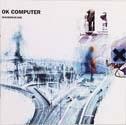
This magazine has been a constant, vocal, and, above all, passionate supporter of DVD-Audio and Super Audio CD since they were first introduced. And we want to do everything we can to make sure these multichannel audio formats not just survive but thrive.But we haven't always been thrilled with the releases during these critical first years. Many of them seem to stem more from a desire to quickly and cheaply get titles out than from a well-thought-out plan of how to get music fans excited about surround sound. To lend a helping hand, we've put together a format-agnostic list of albums we think would help build enthusiasm for the formats. While many stereo recordings seem lacking in multichannel potential (anybody in a hurry to hear the Ramones in surround?), there are plenty of albums where you want to be in the middle of the action. All of our selections fit that bill. And most of them make imaginative use of the sonic space, whether it's the intimacy of P J Harvey or the seemingly infinite universe of Pink Floyd.We want to encourage the record labels to stop obsessing over copy protection for two minutes and get these albums, or ones like them, into the hands of music fans-soon. That would go a long way toward drawing in the curious and keeping software-deprived owners of SACD and DVD-A players in the fold.We don't pretend to have created an exhaustive list, just a much-needed course correction. There were plenty of titles we didn't have room to include, and some we missed, so drop us a line, and tell us what you'd like to see come out in surround. -The Editors
Radiohead OK Computer Every moment of this '90s masterpiece is yearning to break out of two channels and roam free through six. Consider the alternating acoustic- and electric-guitar backdrops and octave-spaced vocal counterpoint on "Paranoid Android," the Floydian textures of "Subterranean Homesick Alien," and the redolent retro synths, ocean waves, sea birds, and apocalyptic vocal cataclysm of "Exit Music (For a Film)"-not to mention the heavily ambient mix of "Karma Police," down to its disintegrating closing "siren," or the album's signature atmospheric grunge. Probably the best argument there is for getting the DVD-A and SACD honchos to kick their boomer-rock habits. - Michael Gaughn
Peter Gabriel Peter Gabriel 3 "Slipping the clippers through the telephone wires"? How'd you like to hear that "Intruder" slipping them through your speaker wires-first in front, then behind, then seemingly right next to your chair? This jungle gym of drums and wires and synths would be a veritable playground for surround sound. Talk about games without frontiers! - Ken Richardson
Kate Bush The Dreaming Six years before she sang "Don't Give Up" with Peter Gabriel, Bush sang on Peter Gabriel 3-and she was so entranced that she took her own leap into the same edgy sonics. The layered vocals, keyboards, and percussion of dense tracks like "Sat in Your Lap" and "Leave It Open" cry to be liberated from the strictures of stereo. - K.R.
Smashing Pumpkins Siamese Dream Sure, the better-known Mellon Collie and the Infinite Sadness would sound great in surround, but it doesn't have Butch Vig's production, and there's not a Vig effort from Garbage to Nirvana that couldn't be turned into a reference-quality multichannel showcase. His rich, dense mixes and uncanny artificial soundstages would yield bountiful treasures if spread around the room, and the pristine recordings would sound that much better in high resolution. Vig's sympathetic Dream settings of Billy Corgan's buzzsaw ballads-the fierce, insistent riffs on "Quiet," the bleak strings, chimes, and tympani on "Disarm," the churning, menacing walls of guitars throughout-all demand the surround treatment. - M.G.
Pink Floyd Wish You Were Here I know, I know: The Dark Side of the Moon was the first album I thought of, too-a brilliant work made for surround sound if ever there was one. But Wish You Were Here is every bit as compelling, perhaps even more so. Sure, it was released in quad during the '70s (as was Moon), but the new surround formats offer an opportunity to really explore its outer limits. From the slow build and opening swell of "Shine On You Crazy Diamond (Part One)" to the defining sound effects of "Welcome to the Machine" to the bubbly interplay between guitar, keyboard, and synthesizer on "Have a Cigar," here's wishing for a kick-ass surround mix. - Bob Ankosko
The Rolling Stones Their Satanic Majesties Request Contrary to popular belief, this is not a disaster, and a surround mix would prove it. Put Jagger in the center, the band in the left and right front, and the psychedelics primarily in the rear, and tracks like "Citadel" and "The Lantern" will be uncovered as the classics they are. Now that's what I call 2,000 light years from 1967. - K.R.
The Beatles Magical Mystery Tour Roll up, roll up-and what a magical tour it would be in surround. There's no doubt that the Beatles' mentor, producer, and studio genius George Martin would be in his glory if he were recording this extraordinary collection today, with its studio tricks and elaborate instrumentation. Woven into its rich sonic fabric are trumpet, harpsichord, piano, cello, flute, organ, and much more. Imagine floating away in the mystical soundscape of "Blue Jay Way," reveling in the sonic madness of "I Am the Walrus," or being enveloped by the lush orchestra and chorus of "All You Need Is Love." I could go on. - B.A.
Beck Odelay Pomo smart-ass pretension never sounded better, and the Dust Brothers' experimental-for-the-mainstream mixes, with a different sonic landscape for each track, would make this a spirited multichannel adventure. The Hullabaloo psychedelia of "Devil's Haircut" and "The New Pollution," the never-been-to-the country of "Lord Only Knows," the Shatner soul of "Where It's At"-these are the sounds 21st-century hipsters crave. - M.G.
Al Stewart Year of the Cat Twenty-five years later, and it still reeks of incense and patchouli. But once you work your way through the proto-New Age haze, the songs are still great, as are the complex, near perfect arrangements. And then there's the impeccable, virtuoso production by Alan Parsons. Just about any of his efforts-Ambrosia, the Hollies, and his own Project are only the beginning of the list-would make for a remarkable surround sound experience. But Cat is arguably his best work, and every track here-from the rolling-ocean strings on the opening "Lord Grenville" to the seemingly infinite sonic expanses of the closing "Year of the Cat"-has the makings of a multichannel masterpiece. - M.G.
Stone Temple Pilots No. 4 The band's debut, Core, was one of the first releases on DVD-Audio, but I'm dying to hear this comeback fire away from all four corners. Three-chord rock? Hell, gimme the one chord of "No Way Out," and don't spare the subwoofer. But it ain't all bombast, so don't forget the snaky guitar accents in the pop-fresh "Sour Girl" and "I Got You." - K.R.
Electric Light Orchestra A New World Record Surging, soaring strings, operatic choruses, the 10-foot-tall jangle of multitracked acoustic guitars, Jeff Lynne's here-there-and-everywhere vocals, funky white-boy doo-wop, Bev Bevan's titanic drums, and '70s synthesizers galore-what more could you want? From the opening synth tsunami through megahits "Telephone Line," "Livin' Thing," and "Do Ya" to the endlessly stacked tracks of the album's protracted fade, A New World Record demands a multichannel metamorphosis. But why stop there? Eldorado, Face the Music, Out of the Blue, Discovery, Time-find me a Lynne-produced title that wouldn't make for killer surround. - M.G.
The Who Who's Next I first heard this when I walked into the wooden auditorium of Point Pleasant Beach (NJ) High School and caught a "sound check" for a concert. The "sound man" was blasting "Baba O'Riley," and Keith Moon nearly made kindling of the place. Today, the auditorium is indeed gone, but I've never forgotten that tower of power. Must get schooled again! Multichannel will deliver. - K.R.
U2 The Joshua Tree You can thank The Edge for this one. His expansive, driving guitar style defines "the U2 sound"-and it wants to envelop you on this late-'80s masterpiece. The layered, reverb-drenched guitars of "Bullet the Blue Sky," the beautifully textured bed of synthesizer, guitar, and keyboard on "With or Without You," the signature shuffling guitars in "Where the Streets Have No Name"-you'll thank me when U2 decides to remix this huge-sounding album in six channels. - B.A.
Enigma MCMXC a.D. This thing already sounds like a surround recording, so why not just finish the job? And it would be hard to think of a better way to hook casual listeners on the wonders of multichannel. Just play them the camp classic "Principles of Lust," with its chanting monks, pan pipes, dance beats, and run-amuck samples. Or let them immerse themselves in the night sounds, lounge-music tropical percussion, and floating synths that form the backdrop for the operatic flourishes of "Callas Went Away." This is surround on a silver platter. - M.G.
P J Harvey Is This Desire? Is this atmosphere? You bet, and if songs like "The Wind," "The Garden," and "The River" seem tailor-made for (surround) sound fields, just imagine how you could be enveloped by the natural wonders of P J's Dorset homeland. Imagine, too, how her vocals in the center could make characters like "Angelene" and "Catherine" seem even more intimate than they already are. - K.R.
Robin Trower Bridge of Sighs If you're a fan of rock guitar, then you know who Robin Trower is. (If you don't, go out and buy Sighs immediately.) This celebrated album, while not the most sonically brilliant recording, showcases Trower's distinctive sound-powerful, fluid, spacey, and at times gentle and seductive. From the ethereal wind chimes in "Bridge of Sighs" to the rich multitrack textures of "In This Place" to the adventurous solos in "Too Rolling Stoned," I want to be immersed. Trower's guitar is huge in stereo but will be absolutely colossal in surround. - B.A.
Weather Report Heavy Weather We've already got Mysterious Traveller on a wondrous SACD, so now we need this-if only for the delightful detail and whimsy of "Birdland," which could truly enchant in six channels. After all, there are five master players here: Zawinul, Shorter, Pastorius, Acuna, and Badrena. Stand back and give 'em some room-make that all of your listening room. - K.R.
Return to Forever Romantic Warrior Great Bartok's ghost! A manic, impish, and masterful triumph from fusion's abbreviated finest hour. Just a couple of examples of its immense surround potential: "Medieval Overture," with Chick Corea's twittering synth filigree and Frankensteinian organ, Al DiMeola's hard-left-and-right unison guitar lines, and Lenny White's wall-to-wall drum kit. And then there are the prolonged crescendos, baroque interludes, majestic fanfares, and Allman Brothers jam of "The Magician." In surround shall fusion be redeemed. - M.G.
Charles Mingus Epitaph Although I've been a jazz fan virtually all my life, I didn't really like big-band at first, preferring small-group combos. It wasn't until I heard what a jazz orchestra sounded like in person that I realized what I'd been missing-and that I'd never be able to hear the same thing from a stereo recording. Mingus took things to the extreme with Epitaph, a 2-hour-plus work written for a 30-piece orchestra. I was in the audience for the 1989 Lincoln Center concert captured on this Sony CD-the first time the work was played since its only previous performance, in 1962-and I was more than blown away by the power of both the music and the performance. I'd do anything to experience that sound again. Sony, are you listening? - Brian C. Fenton
Brian Eno Ambient 4: On Land Eno's liner notes describe how the music was meant "to be experienced from the inside." He originally toyed with releasing a quad version, and even provided a diagram on the back of the LP of a makeshift surround system that could be rigged up by attaching a third "ambient" speaker to the positive leads of a stereo amp. Listening to On Land, you can tell why Eno wanted to extend the album's sonic scope. With names like "Lantern Marsh" and "Dunwich Beach, Autumn 1960," the tracks blend field recordings and instruments with layers of atmospheric effects to evoke chilly, open landscapes. There's no reason why they should remain in stereo. -Al Griffin
Orb Orbus Terrarum If Eno's On Land is redolent of real landscapes, Orbus Terrarum suggests places that can exist only when you close your eyes. This adventurous release features Orb at the height of its craft-weaving together ambient washes of sound with dense textures, spacey dub- influenced echo effects, and subtle tempo shifts that literally cause you to lose track of time. Song titles like "Valley," "Plateau," and "Oxbow Lakes" provide an earthbound reference. Otherwise, this multidimensional music comes from another world entirely, and it would be well served by adding three or four extra channels. - A.G.
Wendy Carlos Switched-on Bach This collection of famous Bach works "realized" on a Moog synthesizer became one of the first of the great classical crossover albums. It brought Carlos to worldwide attention and sparked a host of inferior imitators. S-OB, as she refers to it, was therefore a natural for quad release, which it received in 1972 on an SQ-encoded CBS Masterworks album. It's also a natural for release on a multichannel disc-though Wendy tells me that the mix for the quad release was rough-and-ready and that she'd probably want to redo a few things. She should be given the opportunity. - David Ranada
Karlheinz Stockhausen Contact Electronic-music pioneer Stockhausen, an influence on musicians as diverse as Paul McCartney and my electronic-music teacher (the late Ivan Tcherepnin), "assembled" this all-electronic piece onto a four-track master tape. There are passages where the sound rapidly rotates around all the channels, an effect created by playing the synthesized signal through a turntable-mounted speaker centered among four microphones. Reproduced from a multichannel disc, the result could be even more sensational than it was back in 1960. - D.R.
Bach-Malloch The Art of Fuguing Bach's The Art of Fugue, left unfinished at his death, was never scored for any particular instrument and has usually been performed, with great reverence, on organ or piano. In the late 1970s, William Malloch arranged it-irreverently, but with great regard for the composer's joyous and lusty spirit-for an ensemble of 40 string, woodwind, and percussion players. A multichannel reissue of the marvelous Sheffield Labs recording-originally released in both multitracked and "minimalist" (single-miked) stereo LPs-would provide the missing dimension to show that Bach's seemingly most "abstract" music is full of life. - David Stein
 | |
 | |
 | |
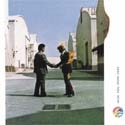 | |
 | |
 | |
 | |
 | |
 | |
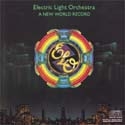 | |
 | |
 | |
 | |
 | |
 | |
 | |
 | |
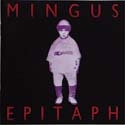 | |
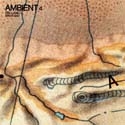 | |
 | |
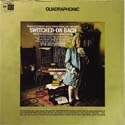 | |
 | |
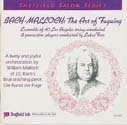 | |









































